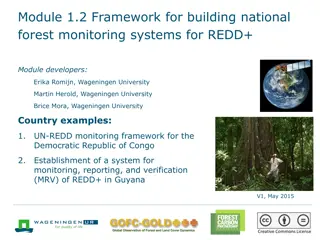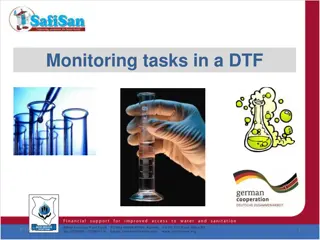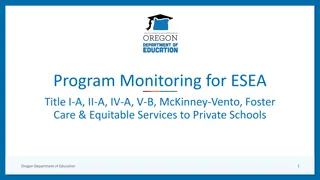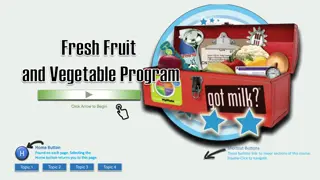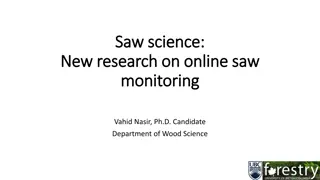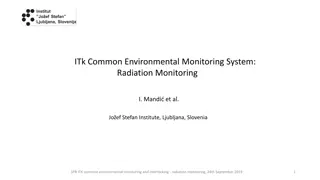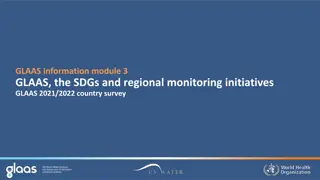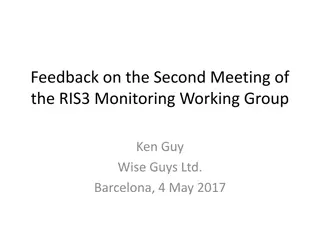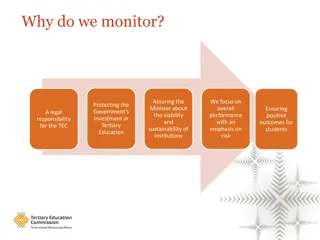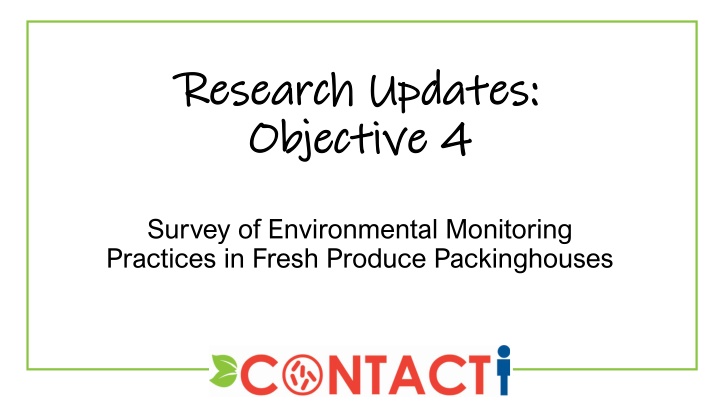
Environmental Monitoring Practices in Fresh Produce Packinghouses
This research update focuses on the survey results regarding environmental monitoring practices in fresh produce packinghouses. It highlights the prevalence of Environmental Monitoring Programs (EMP), corrective actions, and the frequency of tests and corrective actions by zone. The study shows a shift towards pathogen targets like Salmonella in zones 2-4 and discusses the implications of corrective actions identified.
Download Presentation

Please find below an Image/Link to download the presentation.
The content on the website is provided AS IS for your information and personal use only. It may not be sold, licensed, or shared on other websites without obtaining consent from the author. If you encounter any issues during the download, it is possible that the publisher has removed the file from their server.
You are allowed to download the files provided on this website for personal or commercial use, subject to the condition that they are used lawfully. All files are the property of their respective owners.
The content on the website is provided AS IS for your information and personal use only. It may not be sold, licensed, or shared on other websites without obtaining consent from the author.
E N D
Presentation Transcript
Research Updates: Research Updates: Objective 4 Objective 4 Survey of Environmental Monitoring Practices in Fresh Produce Packinghouses
Research Highlights Research Highlights Approximately 62.5% of produce packers who responded to the survey indicated they had an EMP. ATP was the most common monitoring technique used for zone 1 surfaces 100% of produce packers with an EMP had corrective actions (CA) identified. 42% reported never needing to implement a CA
Frequency of Tests by Zone Frequency of Tests by Zone Top 3 Tests by Zone: Zone 1: 1. 2. 3. ATP Generic E. coli Aerobic Plate Count/Listeria Species Zone 2: 1. 2. 3. Zones 3 and 4: Listeria Species Generic E. coli Salmonella 1. 2. Listeria Species Salmonella 3. Generic E. coli
Frequency of Frequency of Tests by Zone Tests by Zone Approximately 62.5% of produce packers (40/62 packinghouse; 5/10 field- pack) who responded to the survey indicated they had an EMP. ATP was the most common monitoring technique used for zone 1 surfaces, followed by generic Escherichia coli, Listeria species, and aerobic plate counts. A shift was noted towards addition and greater reliance on pathogen targets (e.g., Salmonella) for zones 2- 4.
Frequency of Corrective Actions by Zone Frequency of Corrective Actions by Zone Top 3 Corrective Actions by Zone: Zone 1: 1. Intensified Cleaning and Sanitation 2. Re-swab 3. Visual Inspection Zone 2: 1. Intensified Cleaning and Sanitation 2. Re-swab 3. Breakdown Equipment and Clean/Sanitize Zone 3: 1. Intensified Cleaning and Sanitation 2. Re-swab 3. Visual Inspection, Breakdown Equipment and Clean/Sanitize, Vector Swab Adjacent Locations Zone 4: 1. Intensified Cleaning and Sanitation 2. Re-swab 3. Breakdown Equipment and Clean/Sanitize, Vector Swab Adjacent Locations
Frequency of Corrective Actions by Zone Frequency of Corrective Actions by Zone While 100% of produce packers with an EMP had corrective actions (CA) identified, 42% reported never needing to implement a CA, suggesting produce packers were always in conformance. This result indicates a potential shortfall in EMP rigor, as occasional failures are expected.
More Information More Information Check out Check out our paper! our paper! Laura K. Strawn, Ph.D. Assistant Professor Virginia Tech laurakstrawn@vt.edu Faith Critzer, Ph.D. Associate Professor and Undergraduate Coordinator University of Georgia fcritzer@uga.edu This work is supported by the Specialty Crops Research Initiative [grant no. 2020-51181-32157] from the USDA National Institute of Food and Agriculture. Any opinions, findings, conclusions, or recommendations expressed in this presentation are those of the speakers and do not necessarily reflect the view of the U.S. Department of Agriculture.






